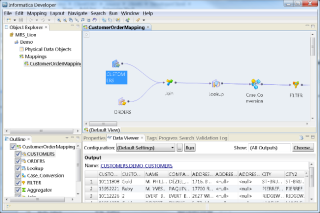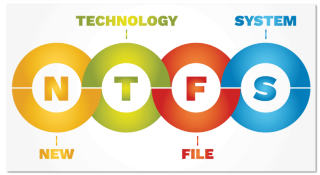Cómo instalar Blacklistd en FreeBSD 11.1
Introducción Cualquier servicio que esté conectado a Internet es un objetivo potencial para ataques de fuerza bruta o acceso injustificado. Hay herramientas como fail2ba
Redaxscript 3.2 CMS is a modern and ultra lightweight, free and open source Content Management System (CMS) with rocket-fast performance. The Redaxscript 3.2 CMS object relational mapper and fluent query builder provide a preconceived and standardised abstraction layer for SQLite, MSSQL, MySQL and PostgreSQL databases. Developers can execute a useful collection of powerful commands from the terminal or browser, allowing automation of installations, backups, imports and many other useful tasks, resulting in a flexible, efficient, and extensible system architecture that helps developers achieve maximum productivity and application performance.
In this tutorial we are going to install Redaxscript 3.2 CMS on a FreeBSD 11 FAMP VPS using Apache web server, PHP 7.1, and a MariaDB database.
First, log into your server as root:
ssh root@YOUR_VULTR_IP_ADDRESS
The sudo command isn't installed by default in the Vultr FreeBSD 11 server instance, so we will first install sudo:
pkg install sudo
Now add a new user called user1 (or your preferred username):
adduser user1
The adduser command will prompt you for lots of details for the user account, so simply select the defaults for most of them when it makes sense to do so. When you are asked whether to Invite user1 into any other groups?, you should enter wheel to add user1 to the wheel group.
Now check the /etc/sudoers file to make sure that the sudoers group is enabled:
visudo
Look for a section like this:
# %wheel ALL=(ALL) ALL
This line tells us that users who are members of the wheel group can use the sudo command to gain root privileges. It will be commented out by default so you will need to uncomment it and then save and exit the file.
We can verify the user1 group membership with the groups command:
groups user1
If user1 is not a member of the wheel group, you can use this command to update the user1 group membership:
pw group mod wheel -m user1
Now use the su command to switch to the new sudo user user1 account:
su - user1
The command prompt will update to indicate that you are now logged into the user1 account. You can verify this with the whoami command:
whoami
Now restart the sshd service so that you can login via ssh with the new non-root sudo user account you have just created:
sudo /etc/rc.d/sshd restart
Exit the user1 account:
exit
Exit the root account (which will disconnect your ssh session):
exit
You can now ssh into the server instance from your local host using the new non-root sudo user user1 account:
ssh user1@YOUR_VULTR_IP_ADDRESS
If you want to execute sudo without having to type a password every time, then open the /etc/sudoers file again, using visudo:
sudo visudo
Edit the section for the wheel group so that it looks like this:
%wheel ALL=(ALL) NOPASSWD: ALL
Please note: Disabling the password requirement for the sudo user is not a recommended practice, but it is included here as it can make server configuration much more convenient and less frustrating, especially during longer systems administration sessions. If you are concerned about the security implications, you can always revert the configuration change to the original after you finish your administration tasks.
Whenever you want to log into the root user account from within the sudo user account, you can use one of the following commands:
sudo -i
sudo su -
You can exit the root account and return back to your sudo user account any time by simply typing the following:
exit
Before installing any packages on the FreeBSD server instance, we will first update the system.
Make sure you are logged in to the server using a non-root sudo user and run the following commands:
sudo freebsd-update fetch
sudo freebsd-update install
sudo pkg update
sudo pkg upgrade
Install the Apache web server:
sudo pkg install apache24
Enter y when prompted.
Now use the sysrc command to enable the Apache service to execute automatically at boot time:
sudo sysrc apache24_enable=yes
The sysrc command updates the /etc/rc.conf configuration file, so if you want to verify the configuration update manually you can simply open the /etc/rc.conf file with your favourite terminal editor:
vi /etc/rc.conf
Now start the Apache service:
sudo service apache24 start
You can quickly check that apache is running by visiting the IP address or domain of the server instance in your browser:
http://YOUR_VULTR_IP_ADDRESS/
You will see the default FreeBSD Apache page displaying the text:
It works!
Check your Apache default configuration file to ensure that the DocumentRoot directive points to the correct directory:
sudo vi /usr/local/etc/apache24/httpd.conf
The DocumentRoot configuration option will look like this:
DocumentRoot "/usr/local/www/apache24/data"
We now need to enable the mod_rewrite Apache module. We can do this by searching the default Apache configuration file for the term mod_rewrite.
By default, the mod_rewrite Apache module will be commented out (which means it is disabled). The configuration line on a clean Vultr FreeBSD 11 instance will look like this:
#LoadModule rewrite_module libexec/apache24/mod_rewrite.so
Simply remove the hash symbol to uncomment the line and load the module:
LoadModule rewrite_module libexec/apache24/mod_rewrite.so
We also need to enable the mod_deflate and mod_headers modules, so make sure they are both uncommented too:
LoadModule deflate_module libexec/apache24/mod_deflate.so
LoadModule headers_module libexec/apache24/mod_headers.so
Now we need to edit The Directory Apache directive in the same configuration file so that mod_rewrite will work correctly with Redaxscript CMS.
Find the section of the configuration file that starts with <Directory "/usr/local/www/apache24/data"> and change AllowOverride none to AllowOverride All. The end result (with all comments removed) will look something like this:
<Directory "/var/www/html">
Options Indexes FollowSymLinks
AllowOverride All
Require all granted
</Directory>
Now save and exit the Apache configuration file.
We will restart Apache at the end of this tutorial, but restarting Apache regularly during installation and configuration is certainly a good habit, so let's do it now:
sudo service apache24 restart
We can now install PHP 7.1 along with all of the necessary PHP modules required by Redaxscript CMS:
sudo pkg install php71 mod_php71 php71-gd php71-mbstring php71-mysqli php71-xml php71-curl php71-ctype php71-tokenizer php71-simplexml php71-dom php71-session php71-iconv php71-hash php71-json php71-fileinfo php71-pdo php71-pdo_mysql php71-zlib php71-openssl php71-zip php71-phar
FreeBSD 11 gives us the option to use a development php.ini or a production php.ini. Since we are going to install Redaxscript on a public web server, we'll use the production version. First, back up php.ini-production:
sudo cp /usr/local/etc/php.ini-production /usr/local/etc/php.ini-production.backup
Then soft-link php.ini-production to php.ini:
sudo ln -s /usr/local/etc/php.ini-production /usr/local/etc/php.inii
We need to configure Apache to actually use PHP, so let's create a new file called php.conf in the Apache Includes directory:
sudo vi /usr/local/etc/apache24/Includes/php.conf
Enter the following text into the newly created file:
<IfModule dir_module>
DirectoryIndex index.php index.html
<FilesMatch "\.php$">
SetHandler application/x-httpd-php
</FilesMatch>
<FilesMatch "\.phps$">
SetHandler application/x-httpd-php-source
</FilesMatch>
</IfModule>
Save and exit the file.
Now let's restart Apache so that it can reload the configuration changes:
sudo service apache24 restart
FreeBSD 11 defaults to using MariaDB database server, which is an enhanced, fully open source, community developed, drop-in replacement for MySQL server.
Install the latest version of MariaDB database server:
sudo pkg install mariadb102-server mariadb102-client
Start and enable MariaDB server to execute automatically at boot time.
sudo sysrc mysql_enable="yes"
sudo service mysql-server start
Secure your MariaDB server installation:
sudo mysql_secure_installation
When prompted to create a MariaDB/MySQL root user, select "Y" (for yes) and then enter a secure root password. Simply answer "Y" to all of the other yes/no questions as the default suggestions are the most secure options.
Log into the MariaDB shell as the MariaDB root user by running the following command:
sudo mysql -u root -p
To access the MariaDB command prompt, simply enter the MariaDB root password when prompted.
Run the following queries to create a MariaDB database and database user for Redaxscript CMS:
CREATE DATABASE redax_db CHARACTER SET utf8 COLLATE utf8_general_ci;
CREATE USER 'redax_user'@'localhost' IDENTIFIED BY 'UltraSecurePassword';
GRANT ALL PRIVILEGES ON redax_db.* TO 'redax_user'@'localhost';
FLUSH PRIVILEGES;
EXIT;
You can replace the database name redax_db and username redax_user with something more to your liking, if you prefer. Also, make sure that you replace "UltraSecurePassword" with an actually secure password.
Change your current working directory to the default web directory:
cd /usr/local/www/apache24/data
Your current working directory will now be: /usr/local/www/apache24/data. You can check this with the pwd (print working directory) command:
pwd
Now use wget to download the Redaxscript CMS installation package:
sudo wget https://redaxscript.com/files/releases/redaxscript-3.2.3-production-full.zip
Please note: You should definitely check for the most recent version by visiting the Redaxscript CMS download page.
List the current directory to check that you have successfully downloaded the file:
ls -la
Remove index.html:
sudo rm index.html
Now uncompress the zip archive:
sudo unzip redaxscript-3.2.3-production-full.zip
Change ownership of the web files to avoid any permissions problems:
sudo chown -R www:www * ./
Restart Apache again:
sudo service apache24 restart
Now we're ready to move on to the final step.
It's time to visit the IP address of your server instance in your browser, or if you've already configured your Vultr DNS settings (and given it enough time to propagate) you can simply visit your domain instead.
To access the Redaxscript CMS installation page, enter your Vultr instance IP address into your browser address bar, followed by /install.php:
http://YOUR_VULTR_IP_ADDRESS/install.php
Most of the installation options are self explanatory, but here are a few pointers to help you along:
Enter the following database values in the Setup your database section of the Installation page:
Type: MySQL
Host: localhost
Name: redax_db
User: redax_user
Password: UltraSecurePassword
Table Prefix: rs_
Next, click on the Create your account section of the Installation page and enter appropriate Admin login details:
Name: <admin name>
User: <admin username>
Password: <admin password>
Email: <admin email>
When you have checked that all of the installation details are correct, simply click on Install to finalize the installation.
NOTE: On FreeBSD 11, you may see a warning message that says "Unsupported Operating System". This is because some of the more advanced features may not work on FreeBSD, as they have not been tested on non-Linux operating systems. The installation will still work and you can still use Redaxscript CMS to publish sites on FreeBSD, but just be aware that you may run into a few problems down the line if you want to use some of the more advanced features.
Once the installation script has finished you will be redirected to a default sample web page. To access the admin section, simply scroll down to the bottom of the sample web page and click on the Login link at the bottom right hand corner of the page.
Alternatively, you can access the Login page by typing the address into your browser manually:
http://YOUR_VULTR_IP_ADDRESS/login
For security reasons, make sure you delete the install.php file and templates/install directory from the webroot directory immediately:
sudo rm -rf ./templates/install ./install.php
Also, make sure the config.php file is not writable:
sudo chmod 444 ./config.php
Lastly, visit console.php in your browser:
http://YOUR_VULTR_IP_ADDRESS/console.php
Enter the console lock command to revoke public access to the console.php page:
console lock
You are now ready to start adding your content and configuring the look and feel of your site. Make sure you check out the excellent Redaxscript CMS documentation for more information about how to build and configure your site.
Introducción Cualquier servicio que esté conectado a Internet es un objetivo potencial para ataques de fuerza bruta o acceso injustificado. Hay herramientas como fail2ba
Introduction A FAMP stack, which is comparable to a LAMP stack on Linux, is a collection of open-source software that is typically installed together t
Este tutorial le mostrará cómo configurar OpenBSD 5.6 con un disco completamente encriptado en su Vultr VPS. Una nota sobre la parte de cifrado: la mayoría de los centros de datos alrededor de
Usar un usuario sudo para acceder a un servidor y ejecutar comandos a nivel raíz es una práctica muy común entre Linux y Unix Systems Administrator. El uso de un sud
¿Usando un sistema diferente? osTicket es un sistema de tickets de soporte al cliente de código abierto. El código fuente de osTicket está alojado públicamente en Github. En este tutorial
Using a Different System? Osclass is an open source project that allows you to easily create a classified site without any technical knowledge. Its sourc
Using a Different System? Wiki.js is a free and open source, modern wiki app built on Node.js, MongoDB, Git and Markdown. Wiki.js source code is publicl
Using a Different System? Lychee 3.1 Photo Album is a simple and flexible, free and open source photo-management tool which runs on a VPS server. It install
Using a Different System? Fork is an open source CMS written in PHP. Forks source code is hosted on GitHub. This guide will show you how to install Fork CM
Fuera de la caja, los servidores Vultr FreeBSD no están configurados para incluir espacio de intercambio. Si su intención es una instancia de nube desechable, probablemente no necesite
El sistema operativo FreeBSD utiliza UFS (Sistema de archivos Unix) para su sistema de archivos de particiones raíz; también conocido como freebsd-ufs en caso de una actualización
Using a Different System? Selfoss RSS Reader is a free and open source self-hosted web-based multipurpose, live stream, mashup, news feed (RSS/Atom) reade
Using a Different System? Matomo (formerly Piwik) is an open source analytics platform, an open alternative to Google Analytics. Matomo source is hosted o
Using a Different System? TLS 1.3 is a version of the Transport Layer Security (TLS) protocol that was published in 2018 as a proposed standard in RFC 8446
Using a Different System? Introduction Craft CMS is an open source CMS written in PHP. Craft CMS source code is hosted on GitHub. This guide will show yo
¿Usando un sistema diferente? Backdrop CMS 1.8.0 es un sistema de administración de contenido (CMS) simple y flexible, amigable para dispositivos móviles, gratuito y de código abierto que nos permite
¿Usando un sistema diferente? ImpressPages CMS 5.0 es un sistema de gestión de contenido (CMS) simple y efectivo, gratuito y de código abierto, fácil de usar y basado en MVC
Using a Different System? NodeBB is a Node.js based forum software. It utilizes web sockets for instant interactions and real-time notifications. The NodeB
Using a Different System? ESpeak can generate text-to-speech (TTS) audio files. These can be useful for many reasons, such as creating your own Turin
¿Usando un sistema diferente? TaskWarrior es una herramienta de gestión de tiempo de código abierto que es una mejora en la aplicación Todo.txt y sus clones. Debido a th
ZPanel, un panel de control de alojamiento web popular, se bifurcó en 2014 a un nuevo proyecto llamado Sentora. Aprende a instalar Sentora en tu servidor con este tutorial.
Aprende cómo instalar Vtiger CRM, una aplicación de gestión de relaciones con el cliente, en CentOS 7 para aumentar tus ventas y mejorar el servicio al cliente.
Esta guía completa le mostrará cómo configurar un servidor Counter-Strike 1.6 en Linux, optimizando el rendimiento y la seguridad para el mejor juego. Aprende los pasos más recientes aquí.
Los ataques de ransomware van en aumento, pero ¿puede la IA ayudar a lidiar con el último virus informático? ¿Es la IA la respuesta? Lea aquí, sepa que la IA es una bendición o una perdición
ReactOS, un sistema operativo de código abierto y gratuito, está aquí con la última versión. ¿Puede satisfacer las necesidades de los usuarios de Windows de hoy en día y acabar con Microsoft? Averigüemos más sobre este estilo antiguo, pero una experiencia de sistema operativo más nueva.
Whatsapp finalmente lanzó la aplicación de escritorio para usuarios de Mac y Windows. Ahora puede acceder a Whatsapp desde Windows o Mac fácilmente. Disponible para Windows 8+ y Mac OS 10.9+
Lea esto para saber cómo la Inteligencia Artificial se está volviendo popular entre las empresas de pequeña escala y cómo está aumentando las probabilidades de hacerlas crecer y dar ventaja a sus competidores.
Recientemente, Apple lanzó macOS Catalina 10.15.4, una actualización complementaria para solucionar problemas, pero parece que la actualización está causando más problemas que conducen al bloqueo de las máquinas Mac. Lee este artículo para obtener más información
13 Herramientas comerciales de extracción de datos de Big Data
Nuestra computadora almacena todos los datos de una manera organizada conocida como sistema de archivos de diario. Es un método eficiente que permite a la computadora buscar y mostrar archivos tan pronto como presiona buscar.






